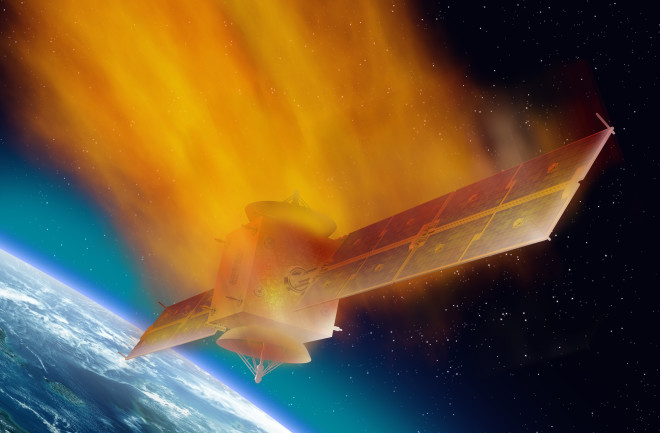You’ve heard of plastics in the ocean. Get ready for metals in the sky.
A new study has found widespread metallic particles in the stratosphere, one of the highest layers of the atmosphere, where the ozone layer protects the world from ultraviolet radiation. Researchers say the contaminants are not normally found in such unusual concentrations and likely bled from satellites, rocket components, and other space-faring vehicles as they reentered the atmosphere.
The threat posed to the ozone layer or humanity at large remains unknown, but scientists say that any changes to the normally pristine stratosphere demand attention. Severe damage to the ozone layer would threaten our species’ very survival, while a milder reduction would cause a variety of ills and worsen skin cancer rates.
Where Did the Metals in Space Come From?
Amid the rise of a private space industry, the number of launches increased from 221 in 2016 to 2,478 in 2022, according to the United Nations Office for Outer Space Affairs. Literal tons of SpaceX, Arianespace, and Russian rockets have heaved themselves into space.
“Most of that material, eventually, comes back down,” notes a statement by researchers from the National Oceanic and Atmospheric Administration, Purdue University, and other institutions.
In September 2023 alone, 24 different components returned to Earth, ranging from rocket bodies to debris, according to a database kept by The Aerospace Company.
The research team measured the stratospheric metals by flying a research jet, a WB-57, to an altitude of 11.8 miles and sampling the air using a nose-mounted device. The scientists also used a similar setup with an ER-2 plane and found, in total, more than 20 metals in ratios mirroring those found in spacecraft alloys. The lithium, aluminum, copper, and lead don’t fall to the ground because they’re suspended, like smoke particles, in aerosols.
Read More: What Is Space Junk And Why Is It A Problem?
Should We Be Concerned About Metallic Space Particles?
These metals have even attached themselves to sulfuric acid particles that play an important role in the welfare of the ozone layer. Some 10 percent are now affected, but the researchers expect that number to rise to as much as 50 percent over the next few decades.
“What effect that could have on the atmosphere, the ozone layer and life on Earth is yet to be understood,” the statement said.
Hundreds of meteors pelt Earth’s upper atmosphere every day, causing metallic particles to rain down and form what scientists call “meteor smoke.” But the signature for those metals is different than those found by the study.
“What this research shows us is that the impact of human occupation and human spaceflight on the planet may be significant, perhaps more significant than we have yet imagined,” said Daniel Daniel Cziczo, an atmospheric scientist at Purdue University, in a statement. “Understanding our planet is one of the most urgent research priorities there is.”
Read More: Scientists Sound Alarm Over Growing Amount of Junk in Space

